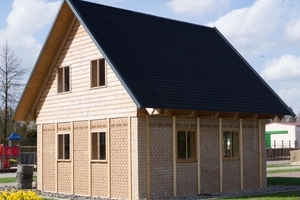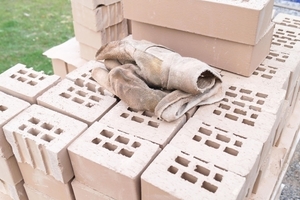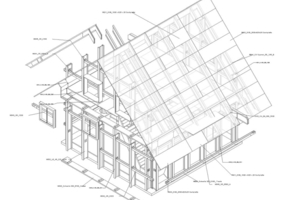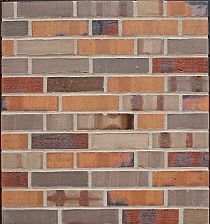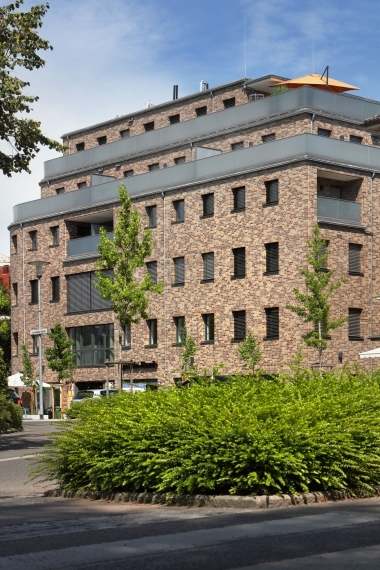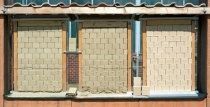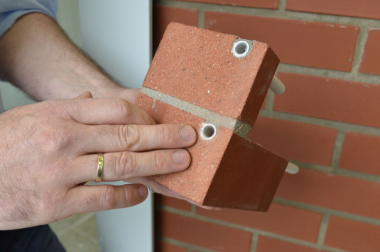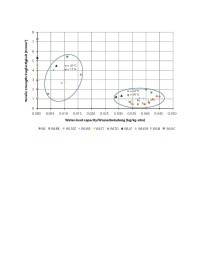Hagemeister produces adobe bricks for modular building component systems
Sponsoring foundation Kastell-Stiftung has donated a modular building component system to the home-town association Heimatverein Darfeld as help toward self-help. A group of youths with no artisanal training put up the carcass all by themselves in a day and a half with nothing but a hammer. The solid exterior walls of the patented plug-interlock system of wood and plywood panels are filled out with customized adobe bricks made especially for this project by the Hagemeister clinker factory. The show home is open for inspection at the multigenerational park in the Münsterland town of Darfeld. The little “estate house” is presently being used by Münster University as a “house of science” for exhibitions, and is being made accessible to interested parties as a prototype. Concept developer Hans-Ludwig Stell of architectural consultants Stell-
architektur pegs the building‘s longevity as equal to that of conventionally built structures.
Adobe bricks create a pleasant indoor climate
Basically, any number of different materials could be used for framing the wall. The solid infill masonry, though, remains Hagemeister‘s adobe bricks in sizes to match the modular pattern in a simple stretcher bond. Thanks to their good ecobalance and moisture/temperature-storage functions, the adobe bricks create a pleasant indoor climate.
The idea behind the building component system came from Dr. Karl-Wilhelm Stell, founder of Kastell-Stiftung, as a tool for promoting the construction of standardized modular, extensible houses in connection with charitable projects in threshold countries and poverty regions. After three years of planning and developing work, Hans-Ludwig Stell and his team at Stellarchitektur finished elaborating a modularized building component system that allows easy, economical implementation of buildings in myriad different versions and models.
In the pipeline right now are a multifunctional assembly building with offices, workshops and a guest apartment in Barsinghausen as an extension to a new group home for mentally handicapped children, the exhibition and information building called “Grüne Mitte Coesfeld” (roughly Coesfeld‘s green centre), the German-Dutch “Berkelprojekt” with houses stretched out along the Berkel river, and a holiday village in Rosendahl, complete with rehab centre for long-term patients and children in need of long-time care.
Hagemeister GmbH & Co. KG
www.hagemeister.de

